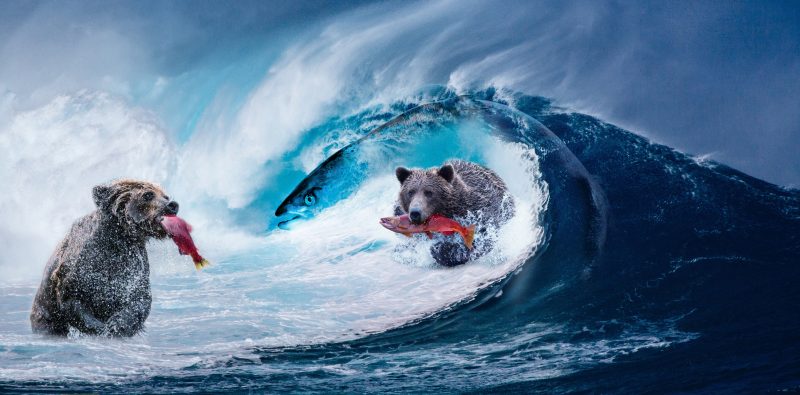Salmon – who is catching what where
A look by the numbers of last year’s record global Pacific salmon catch
By SeaWestNews
651 million – Commercial fishermen caught 651 million Pacific salmon in 2018 – one of the largest catches recorded for an even year, according to the North Pacific Anadromous Fish Commission (NPAFC).
1% – B.C.’s share was a mere 1% – about four million fish. In the mid-1970s, B.C.’s share of the global Pacific salmon catch was about 15%.
55% – Of the total 2018 commercial harvest, 55% (by weight) were pink salmon, followed by chum (26%) and sockeye (16%).
63% – Russia claimed 63% of the commercial Pacific salmon catch, followed by the U.S. (27%), Japan (9%), Canada (1%) and South Korea (less than 1%).
10.8 million – In 2018, 10.8 million Fraser River sockeye returned, compared with just 1.7 million the year before, according to the Pacific Salmon Commission (PSC). This year’s forecast is for 4.8 million sockeye and five million pink salmon.
1.1 million – Last year, B.C. First Nations caught 1.1 million salmon, of which 274,400 were for First Nations commercial fisheries, according to the PSC. The sport sector’s share was 109,600.
28 million – Although there have been periodic rebounds, such as the 28 million sockeye that returned to B.C. in 2010, and some very high pink salmon returns, B.C. salmon stocks have generally been declining since the late 1990s.
495 million – In 2018, Russia caught a whopping 495 million salmon – 420 million of which were pink salmon. That is more than double Alaska’s total take of 119 million.
1 million – Alaska pumped out three times as many pink salmon hatchery fish as Russia (one million, compared with Russia’s 257,159), yet Russia has had much higher pink salmon abundance than Alaska.
1.6 million – Despite adding about 1.6 million chum salmon to the Pacific Ocean each year, Japanese commercial fishermen have experienced a five-year decline in their annual commercial catch.
80,000 – Last year, the U.S. Coast Guard intercepted and detained a Chinese vessel, the Run Da, fishing north of Hokkaido. It was caught with 80 tonnes of salmon, mostly pinks, and one tonne of squid. That’s about 60,000 salmon. To put that in perspective, the entire B.C. recreational fishing sector’s take of salmon was less than 110,000 for the entire year in 2018. – numbers sourced from a Business in Vancouver article.

